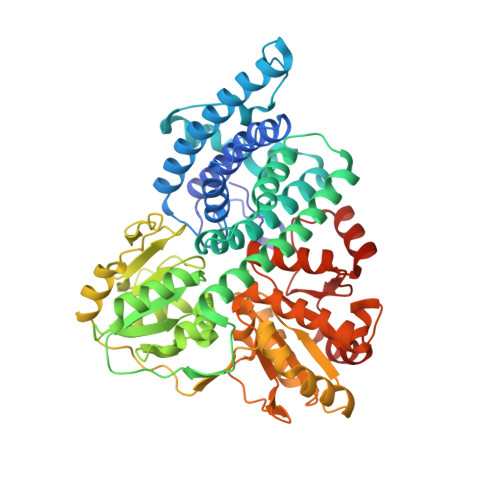Structural and Functional Relationships in the Hybrid Cluster Protein Family:Structure of the Anaerobically Purified Hybrid Cluster Protein from Desulfovibrio Vulgaris at 1.35 A Resolution
Aragao, D., Mitchell, E.P., Frazao, C.F., Carrondo, M.A., Lindley, P.F.(2008) Acta Crystallogr D Biol Crystallogr 64: 665
- PubMed: 18560155
- DOI: https://doi.org/10.1107/S0907444908009165
- Primary Citation of Related Structures:
1W9M - PubMed Abstract:
The hybrid cluster protein (HCP) from the sulfate-reducing bacterium Desulfovibrio vulgaris strain Hildenborough has been isolated and crystallized anaerobically. The phase problem was solved for a P2(1)2(1)2(1) crystal form using multiple-wavelength anomalous diffraction data collected in the vicinity of the Fe K absorption edge. Although the overall protein structure is essentially the same as that previously obtained, it shows that the nature of the hybrid cluster has particular differences when isolated and crystallized in the absence of oxygen and this provides insight into the structural features associated with changes in the oxidation state. A comparison between HCPs and carbon monoxide dehydrogenases (CoDs) shows that they possess a similar fold and that the dehydrogenases have a related cluster at the equivalent HCP hybrid cluster position. This helps to understand the nature of the hybrid cluster and to predict a dimeric structure for class 3 HCPs, which lack the N-terminal region.
- Instituto de Tecnologia Química e Biológica, Avenida da Repúlica, Apartado 127, 2781-901 Oeiras, Portugal.
Organizational Affiliation:



















